Matador Network's Blog, page 1164
February 11, 2019
Traditional Moroccan flatbreads
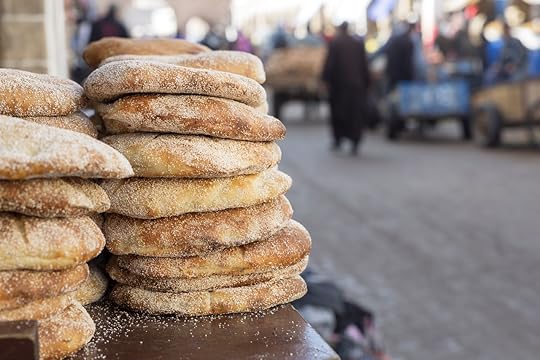
A bread-loving tourist does not lack for destinations. They can tear hunks from a crusty baguette as they stroll around Paris, scoop up fingerfuls of stew with spongy injera in Addis Ababa, Ethiopia, and pluck pillowy naan straight from the tandoor in New Delhi. With all of these options, it would be easy to miss Morocco on a global tour of carbohydrates. The North African nation is known for its tagines and its mint tea but not for its leavened products. But as any native or visitor to Morocco will tell you, sleeping on Moroccan bread — mostly various types of round flat-ish breads called khobz — is practically criminal, at least for those (like us) who consider it a high crime to ignore a heavenly loaf. Seek out these seven types of bread on your next adventure through Morocco.
Ksra

Photo: dp Photography/Shutterstock
One of the more versatile styles of Moroccan bread, oven-baked ksra can include wheat, semolina, barley, or any variety of flours. The squat round loaves show off the textural play that makes Moroccan khobz (flatbread) worth seeking out, with a crunchy exterior and a pillowy interior. Many bakers decorate their ksra with sesame or anise seeds depending on the intended meal and pairings.
Msemen (also known as rghaif)

Photo: Bartosz Luczak/Shutterstock
Msemen looks similar to other flatbreads except that it’s square unlike the ubiquitous ovals elsewhere in the world. Inside this unassuming square, though, lie layers of pastry dough that give msemen the textural depth of a croissant. Despite being packed in tight folds, the layers remain beguilingly springy and stretchy, clinging to each other just enough to make it incredibly satisfying to pull them apart. Msemen is often plain in the morning when served with tea and sweet condiments, and it comes bursting with stuffings like veggies, meats, and herbs when served in the afternoon or evening.
Harcha

Photo: Candice Bell/Shutterstock
If you took a sweet Colombian arepa and dipped it in sand, you’d have something like Moroccan harcha. Bakers rolls the dough in semolina grits before frying these little palm-sized rounds in a pan, giving them a sandy texture and the taste of sweet yellow corn. Like other Moroccan bread, hosts serve harcha both at breakfast and as an afternoon snack with tea, and they can be savory with cheese or sweet with jam depending on your preferences at either time of day.
Mahrash

Photo: Robson90/Shutterstock
Another coarse bread, mahrash gets its texture from barley grits instead of semolina, and it’s much larger than the petite harcha. The large rounds are relatively flat and usually sliced partially like pie to make tearing easier. The barley, combined with other flours, gives the bread a thick chew, making sturdy mahrash the ideal bread for scooping up meats and veggies at dinner.
Krachel

Photo: picturepartners/Shutterstock
Anise seeds, sesame seeds, and orange flower water are critical ingredients in any Moroccan kitchen, and all three come together in the traditional krachel. Krachel is a sweet bun often topped, and sometimes filled, with seeds. It’s commonly served at breakfast or with afternoon tea and make a perfect sweet treat when smeared with butter, dipped in honey, or sluiced with jam.
Baghrir
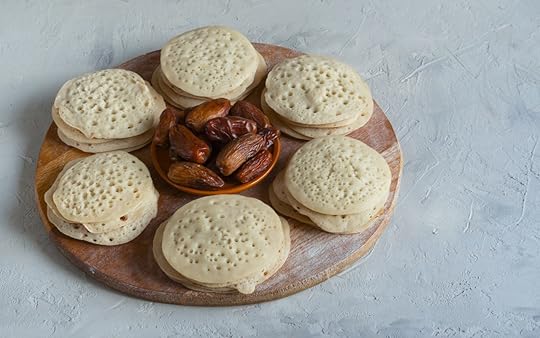
Photo: Stanislav71/Shutterstock
Syrup sliding from the sides of pancakes may look pretty in a pic, but all that runoff is a sign that your flapjack simply can’t absorb enough sweet topping. That’s not a problem for baghrir, a semolina-based pancake riddled with holes ready to absorb condiments. Yeast in the batter expands into a honeycomb pattern in the pan, and bakers often forego flipping baghrir to preserve the texture. The air-filled pockets make baghrir impossibly light and fluffy — until, that is, you cover them in honey or jam, which quickly soaks into the spongy dough.
Batbout

Photo: Tanya Stolyarevskaya/Shutterstock
Plop a few of these pita-like rounds on the stove and in minutes they’ll puff up enough to offer a perfect pocket for any filling you desire. Whether your batbout is made with white, wheat, semolina, or durum flour, it’s an excellent, sandwich-like vehicle for lunch. Singed lightly on either side from the pan, batbout highlight the customizable, mix-and-match freestyling that makes Moroccan bread such a joy. 

More like this: My car broke down in the Sahara, and it taught me about trust
The post This African country is a bread lover’s paradise appeared first on Matador Network.

Chicago arcade bar transforms

You might not have the stamina to rewatch all seven Game of Thrones seasons in preparation for the final season this April, but you can get in the mood by visiting this GoT-themed bar in Chicago.
Replay Lincoln Park, an arcade bar in downtown Chicago, has transformed into an immersive Game of Thrones pop-up experience. Patrons will be treated to backdrops and props resembling sets from the show, including Winterfell, Casterly Rock, Highgarden, and a Dothraki camp. They will also be able to take pictures in the Throne Room, in front of the Wall of Faces, or with White Walkers.
To make the experience even more interactive, the bar will even host themed events, like a “Red Wedding” dinner, jousting competition, Game of Thrones trivia each Thursday, and introduce specialty cocktails like the “Dothaquiri.” It will also collaborate with Ommegang Brewery, which makes the official Game of Thrones beers, to offer themed brews.
Entry is free, but the bar also offers a VIP experience which includes a goblet, commemorative Game of Thrones print, and express entry to the bar for $20. The Thrones pop-up will run until March 3, 2019, with tickets available on its website.
And if you can’t make it to Chicago, know that there are other ways to immerse yourself in the HBO series’ fantastical world this winter. A Game of Thrones exhibition is coming to Belfast for the show’s final season, there’s a Game of Thrones-themed ice hotel in Finland, and, best of all, you can pack your passport and check out the real-life settings. 
H/T: Lonely Planet

More like this: ‘Game of Thrones’-themed ice hotel is coming back to Finland
The post This Chicago bar is the ultimate ‘Game of Thrones’ drinking hole appeared first on Matador Network.

Polar bears besiege Russian islands

We tend to think of polar bears as beautiful but elusive animals that very few of us will be lucky enough to ever see in person. But for the people of Novaya Zemlya islands, a remote Arctic archipelago in Russia, polar bears are not mysterious enough these days.
Dozens of bears have besieged the islands, which are home to just 3,000 people. Belushya Guba, the archipelago’s main settlement, has declared a state of emergency after spotting 52 bears and reporting incidents of bears chasing people, looking for food in dump sites, and entering public and residential buildings.
View this post on InstagramA post shared by Irina Elis MURMANSK, RUSSIA (@muah_irinaelis) on Feb 4, 2019 at 2:42am PST
Sad videos and photos of the animals looking for food in the garbage heaps of the incredibly polluted islands reveal the extent of the situation.
View this post on InstagramA post shared by Irina Elis MURMANSK, RUSSIA (@muah_irinaelis) on Feb 9, 2019 at 10:23am PST
According to Vigansha Musin, local administration head, the event is unprecedented. “I’ve been on Novaya Zemlya since 1983,” he said in a press release. “There’s never been such a mass invasion of polar bears.” His deputy, Alexander Minayev, added that the presence of the bears is disrupting normal life on the islands. “People are scared, afraid to leave their homes,” he said. “Their daily routines are being broken, and parents are unwilling to let their children go to school or kindergarten.”
Although residents of Novaya Zemlya islands have tried to scare away the bears, it seems that they are unwilling to move. Polar bears are an endangered species in Russia, and shooting them is prohibited by law. A team of specialists is supposedly planning to sedate and relocate the bears, explains The Guardian.
Climate change has forced polar bears to change their normal migration route and hunting trails, resulting in the surge of polar bear activity in close proximity to humans, a situation dangerous for both bears and humans. 
H/T: BBC News

More like this: The 7 best places to see a polar bear in the wild
The post Russian islands besieged by dozens of hungry polar bears appeared first on Matador Network.

February 8, 2019
Things to see around Joshua Tree

Deserts, in most parts of the world, are nomadic wastelands. Even if you can appreciate the beauty of endless sand and imposing red rocks, you typically won’t find much in those deserts aside from wandering tribes and the occasional outpost. But not in California. America’s home to the far-out and untraditional has filled its desert with art installations, deserted water parks, and Old West ghost towns that make a road trip through the desert as great a tourist attraction as Disneyland or Yosemite. Cruising the back highways of inland Southern California you’ll find all sorts of quirky little treasures. Here are 10 you must stop and see.
1. Cabot’s Pueblo Museum — Desert Hot Springs

Photo: Cabot’s Pueblo Museum/Facebook
The most impressive thing about this four-story, 35-room, 5,000-square-foot pueblo isn’t that it’s the meticulously preserved home of Cabot Yerxa, one of the men responsible for discovering the healing waters of Desert Hot Springs. It’s that the whole thing is made from stuff Yerxa found lying around the desert nearly 100 years ago. The structure is a hodgepodge of repurposed materials, from nails salvaged from abandoned cabins to scrap metal used to build walls. The interior is full of bizarre desert artifacts like coyote skulls and old food jars, and the floors on the ground level are natural desert dust. It’s a towering maze of desert conservation, one of the more surreal private home tours you’ll ever take.
2. Calico ghost town — Yermo

Photo: JVelasco/Shutterstock
Though it’s hardly an unknown gem to anyone familiar with the Mojave Desert, Calico is probably the best-preserved, 19th-century ghost town in the region, and definitely the best setup for tourists. This one-time silver mining town died out when the price of silver dropped, and laid vacant until Walter Knott (of Knott’s Berry Farm fame) took it over in the 1950s. He donated it to San Bernardino County and it’s now a regional park, with a handful of shops and restaurants lining its wooden sidewalks. About a third of the original structures are still standing in Calico, where actors in period costumes roam the streets, and the occasional gunfight still breaks out in the streets.
3. Pioneertown
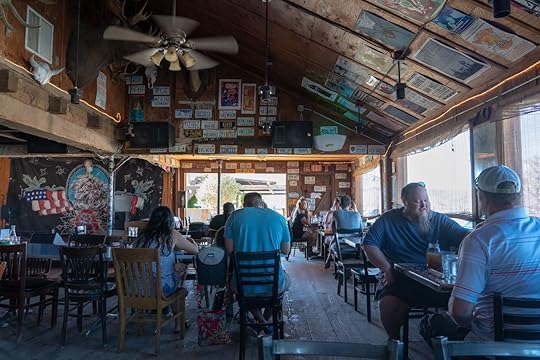
Photo: BrianPIrwin/Shutterstock
Anyone who’s spent a long weekend at Joshua Tree National Park has probably made a stop in tiny Pioneertown, with a population of 420. It might look like a classic old western ghost town, but this collection of wood saloons and feed stores only dates back to the 1940s, when Gene Autry and Roy Rogers built it as a permanent set for their movie westerns. Now it’s best known as the home of Pappy & Harriet’s Pioneertown Palace, a saloon, restaurant, and music venue where big-name acts play before gigs in LA or at Coachella. Even when stars aren’t taking the stage the remote bar is known as one of the best live music venues in America — and definitely the best in the desert.
4. Bombay Beach

Photo: Jose Gil/Shutterstock
The middle of the Colorado Desert seems like an unusual place for a beach, but when the flooding Colorado River overtook a canal and flowed into this massive desert basin in 1905, it created the largest lake in California, the 360-square-mile Salton Sea. The lake then spurred a handful of little waterfront resort communities, which thrived until the lake began to die and the dead fish and birds gave it a famously-noxious odor. Now the desolate “resort” town is home to just under 300 people but has begun to attract artists, poets, and bohemians for its off-the-grid, apocalyptic beauty. Every year it hosts the inaccurately-named Bombay Beach Bienniale, where creative types inject the city with a few days of high culture in the forgotten desert. And if you happen to be in town during a showing at the Bombay Beach Drive-In, you’ll have the opportunity to watch a movie from an abandoned car on a screen made from the side of an old truck.
5. East Jesus Art Monument — Slab City

Photo: Nagel Photography/Shutterstock
Slab City is a community of people who’d rather avoid the outside world, a town with no electrical grid, its own waste system, no running water, and some of the coolest art in California. Though you’ll find decorated cars and trippy sculptures all over Slab City, the best concentration of artwork is in the East Jesus Art Monument. Here, colorfully-painted abandoned shacks sit in the sand next to a mammoth in a gas mask, rusted sundials, and a wall of televisions with commentary on our screen-obsessed culture.
6. Lake Dolores Waterpark — Newberry Springs
View this post on InstagramA post shared by Lake Dolores Water Park (@lakedoloreswaterpark) on Nov 29, 2018 at 2:24am PST
Once upon a time, this aquifer-fed oasis beckoned dusty travelers off the side of Interstate 15 between Los Angeles and Las Vegas to come and cool off on its slippery water slides. From the 1960s to the mid-1980s Lake Dolores was a roadside campground and water park where families could stop for a refreshing respite. It closed in the 1980s, then reopened as the 1950s-themed Rock-a-Hoola Water Park, then the Discovery Water Park in 2002. Discovery closed in 2004 and the park has sat as a relic for 15 years. Though it’s technically illegal to go stroll the grounds, it’s not exactly teeming with security, and the slides and lazy river have popped up in skating videos for years.
7. Elmer’s Bottle Tree Ranch — Grande

Photo: Grossinger/Shutterstock
One of the state’s most renowned attractions off Route 66, this sprawling park of bottle trees has drawn people from all over the world for its unique, colorful installations. Elmer Long has been collecting bottles from the desert since he was a kid, and after amassing enough he developed this park, turning the bottles into painstaking pieces on metal trees, topped with everything from rakes to rifles to bird feeders. The ranch is a surreal forest of glass and desert refuse, where Elmer — every bit the California desert rat — happily strolls the trails and tells you stories about how he created each one. Admission is free, but donations are encouraged. Give a couple of dollars and you’re welcome to take a piece of glass home with you.
8. Salvation Mountain — Niland

Photo: Nagel Photography/Shutterstock
Leonard Knight does not describe himself as an artist, but the giant adobe mountain he’s created about an hour and a half from Palm Springs in Imperial County would be hard to describe as anything but art. This giant tribute to God and his gifts to the world is an ever-evolving mound of painted clay, where Knight adds whatever sculptures inspire him, covers them in colorful paint, and lets the mountain grow at the side of a river bank. The one constant is the giant “God is Love” message atop the 50-foot summit, with the Sinner’s Prayer right below. No matter one’s thoughts on religion, this testament to God is an impressive work to observe.
9. Noah Purifoy’s Desert Art Museum — Joshua Tree

Photo: gabriel12/Shutterstock
Artists truly are visionaries who see in everyday life what no one else can. Look no further than sculptor Noah Purifoy’s sculpture garden near Joshua Tree National Park. The artist who made his name crafting sculptures out of debris from the 1965 Watts riots created an entire park of pieces made from desert “junk,” including televisions, tires, and old sinks. The museum is open every day from sunrise to sunset and is free to the public.
10. World Famous Crochet Museum — Joshua Tree

Photo: World Famous Crochet Museum
When this minuscule museum opened just down the street from the Joshua Tree Saloon it wasn’t actually “world famous.” But HSBC has done its part to help the little green trailer live up to its name, placing pictures of the museum in airport ads throughout the world. Though most air travelers probably have no idea where — or what — it is, the World Famous Crochet Museum is a little hut that’s open whenever it feels like it, filled with crocheted animals, smiley faces, and even Oreo cookies. If you’re creeped out by large numbers of stuffed animals in one place it may not be for you. But for lovers of the bizarre, it’s worth the 10-minute visit. 

More like this: 9 beautiful deserts you’ve never heard of
The post The bizarre roadside attractions of the California desert appeared first on Matador Network.

The best travel rewards credit cards

The buzz around travel rewards credit cards is real, and if you travel frequently, can seem nearly impossible to escape from. Figuring out how they work and which ones to apply for is another story. As is the case with choosing hotels and airlines, not all rewards programs are created equal. Whether or not you have any plastic in your wallet at the moment, applying for a card that kicks back some sexy rewards makes the prospect of 20 percent interest rates and annual fees much easier to swallow. But here’s the thing, at the end of the day, a travel rewards card is still a credit card and you can still royally screw your finances if you slack off on payments or aren’t educated on how to optimize the programs. So study up, have a system in place, then get excited for the free flights and loads of other perks in your future.
The state of reward travel in 2019
The general trend in rewards cards over the past few years is that credit card issuers will generally offer enough points — between 30,000-50,000 in most cases– for a free domestic roundtrip between two major airports once a new customer meets the initial spending minimum. This is true for both airline-specific cards and general travel rewards cards. Your best way forward is to apply for one of each and take advantage of the ultimate travel hack, known as the double dip. It works like this — book a flight on the card with the airline at which you are a mileage member, but don’t use your mileage card to pay for the trip. Instead, pay with the non-airline specific rewards card. You’ll earn points on that card right away in relation to the amount of money spent on the flights. Then, once you have the confirmation number from the airline, add the trip to your rewards account to earn miles with the airline after you fly, and to take advantage of priority boarding and the program’s other perks. By booking travel this way, you’re earning points both on your card through one purchase as well as with the airline. Another common perk these days is trip protection insurance. While this isn’t a replacement for general travel insurance, it covers changes and cancellations that are beyond your control.
What to know before applying
Before you apply for any of these cards, have a firm grasp on these credit card best practices:
Interest rates on travel cards usually hover around 20 percent, charged each month following the first billing cycle after a purchase is made, if you don’t pay it off before the statement date. Our top card, Chase’s Sapphire Reserve, charges a variable interest rate of 17.99–24.99 percent APR, for example. If you don’t pay the balance off each month, you’re looking at a markup in the ballpark of a fifth of what you already paid for every purchase made. This offsets any perks real quick, so unless there’s an emergency, don’t charge more than you can pay off each month.
Unless you’re particularly loyal to a specific airline (perhaps their hub is at your local airport and there are frequent cheap flights, for instance), airline-specific cards on their own are often not the best option for budget-conscious travelers. Both airline-specific and non-airline affiliated travel rewards cards allow you to collect points for all purchases made. But airline cards generally don’t allow you to redeem bonus points for non-airline travel activity. In addition, they often require you to purchase further activity — namely a future flight — to redeem your points. On the other hand, the Barclaycard Arrival Plus allows you to redeem points by applying them toward offsetting travel charges already on your card, whether that be hotel, flights, or other travel costs. As we noted above, the best approach is often to have one airline specific card and one non-airline specific card.
You must meet a minimum spending requirement in order to get that sweet sign-on bonus. This is where they get you — hoping you’ll go on a spending spree to hit the minimum and be unable to pay off the balance each month. If that happens you’ll end up racking up enough in interest charges to reimburse the company for the bonus — and then some. Keep it smart by charging things you already pay for, like your phone bill, gas, and utilities. Some people are even able to pay their rent or mortgage on the card, and then immediately pay it off through their bank. You generally have a few months to hit the minimum spend, so there’s no need to head straight to Amazon and buy your entire wishlist.
Best travel rewards credit cards to apply for this year
Chase Sapphire Reserve
Annual fee: $450
Sign-on bonus: 50,000 points when you spend $4,000 in the first three months
The Chase Sapphire Reserve card is a perennial leader among travel rewards credit cards because no other card offers perks on par with what you get here. The 50,000-point sign-on bonus will get you back and forth between many major US airports, or knock off a good chunk of the bill should you head to a far-flung destination like Southeast Asia. A standard offer by itself, Chase kicks it up by tripling your points on all travel and dining purchases AND offering an annual $300 travel credit. It also has its own in-house program for members called Chase Ultimate Rewards, essentially a cross between an online travel agency (OTA) and extended bonus program. Your points are worth more when you book and redeem through them directly.
This is a “premium” rewards card, meaning it’s tougher to qualify for than many others. But if you travel frequently and are consistent about paying your bill off each month, you can significantly hack your travel costs with this card. Just try not to jump out of your seat when that $450 charge hits your account each year.
Additional perks:
Travel protection insurance up to $10,000 per trip
An included damage waiver on auto rental insurance policies
No foreign transaction fees
Barclaycard Arrival Plus
Annual fee: $89
Sign-on bonus: 70,000 miles (limited time offer) after you spend $5,000 in the first 90 days
Barclaycard’s top offer, the Arrival Plus World Elite Mastercard, ranks high because of the low annual fee and epic sign-on bonus, which is enough to knock off $700 in travel costs put on your card. It also offers five percent “cash back” on point redemption, a cool perk where you get a chunk of your points back even after you’ve redeemed them. There are no foreign transaction fees and, if you fancy yourself a storyteller, you can earn a few extra miles by sharing your travel stories in its Barclay Travel Community from time to time. Applying your points to travel costs is also a breeze.
Additional perks:
Your interest rate is based on your credit score. If you’re a credit ninja, your rate can be as low as 18.24 percent.
Two points earned per dollar spent
Your miles never expire, as long as the account is in good standing.
Southwest Rapid Rewards Priority Credit Card
Annual fee: $149
Sign-on bonus: 30,000 points after you spend $4,000 in the first three months
Every rule has an exception. Southwest’s popular Rapid Rewards program are the cream of the airline credit card crop, and the best part is that you’ll have someone to toast to your savings with on your next Southwest flight. New Rapid Rewards Plus applicants through February 11, 2019, receive a free Companion Pass that allows you to bring someone along on a flight before the end of the year for only the cost of taxes and fees. Every year on the anniversary of your sign-up date, Southwest will say thanks with 7,500 points on the house. Southwest flight purchases kick back at two points per dollar spent and, in a sign of progress for airline cards, offers no foreign transaction fees.
Additional perks:
$75 annual travel credit
Four upgraded boardings per year, so you can snag the prime overhead bin space that’s actually above your seat
20 percent back on a bunch of in-flight purchases
American Express Platinum Card
Annual fee: $550
Sign-on bonus: 60,000 points after you spend $5,000 in the first three months
That 60,000 reward is the cream of the crop, making even the high minimum spend seem worth it. The annual fee is quite high — but Amex makes up for this by hosting some of the most gorgeous airport lounges in the world, under the moniker Centurion Lounge, and giving cardholders access. Also included in the annual fee is the best purchase protection program of any travel rewards credit card, keeping you confident that you’ll get the most from both the products and experiences you buy. The downside is that American Express generally isn’t preferred by retailers, so you can’t count on using it everywhere you shop.
Additional perks:
Earn five times the points on flights booked with the card.
$15 in ride credits with Uber each month, and $20 in December
Opportunities for hotel room upgrades and occasional credits through Amex’s Hotel Collection program
$100 fee credit for Global Entry and $85 for TSA PreCheck
Capital One Venture Rewards
Annual fee: $95
Sign-on bonus: 50,000 miles after you spend $3,000 in the first three months
The sign-on bonus offered with the Venture Rewards card is great considering the low annual fee. Capital One also makes it super easy to zap travel-related charges from your card, rivaled only by Barclaycard in this department. You just log in and choose the charges you want to use your points to offset from the statement it has prepared for you — the weight falls right off your shoulders instantly.
Additional perks:
No foreign transaction fees and easy transfer of miles to Capital One’s airline partners, meaning you optimize your points when buying future flights — in essence, this combines the perks of both airline-specific and bank-issued cards
$100 credit for Global Entry or TSA PreCheck
An included damage waiver on auto rental insurance policies
Ten times the miles on hotel rooms when you book through Hotels.com


More like this: The 7 best airport lounges in the US
The post The best travel rewards cards for 2019 appeared first on Matador Network.

The best trails in the US
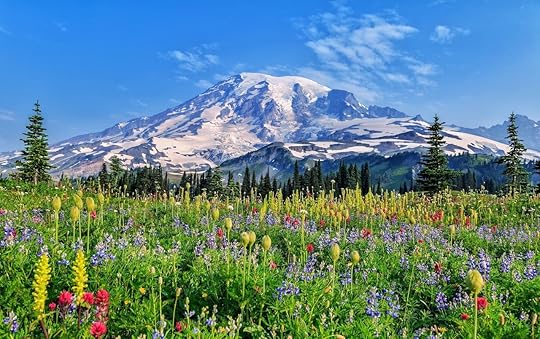
Every hiker has a dream hike. Some dream of twirling around in a field of wildflowers in the Alps of Switzerland. Others yearn for the most remote sand dunes in the Sahara. A few aspire to conquer the world’s highest peaks with an ice axe in hand. While the world’s most popular hiking destinations span far and wide, the United States has a vast array of ecological diversity that rivals the world’s most popular hiking destinations. These five hiking trails display the United States’ most unique climates and most impressive network of trails, and will make any US-based hiker reconsider the trails in their own backyard.
1. Mesquite Dunes — Death Valley National Park, California

Photo: yhelfman/Shutterstock
Images of Death Valley National Park usually conjures cracked salt flats stretching on for miles, but the Mesquite Sand Dunes in California’s Death Valley National Park are more reminiscent of the windswept sands of the Sahara. Even the Sierra Nevada range you can see in the distance could be mistaken for North Africa’s Atlas Mountains. Although sand dunes only make up one percent of the park, in an unmarked and roughly two-mile hike, you can experience the rippling sand and undulating peaks of this unique desert environment.
2. Hoh River Trail — Olympic National Park, Washington

Photo: Anton Foltin/Shutterstock
The Pacific Northwest may be famed for its moody rain-soaked cities, but all of that rain contributes to one of the few temperate rainforests in the continental United States. Olympic National Park may be best known for the massive mountains it encompasses, but the surrounding lushness of the Hoh Rainforest makes for an otherworldly hike. Walking through the wet forest surrounding by trees utterly covered in bright green moss is an experience you’re unlikely to have anywhere else. Take an overnight trip on the 17.3 mile Hoh River Trail or the shorter and more heavily trafficked 0.8 mile.
3. Wonderland Trail — Mount Rainier National Park, Washington
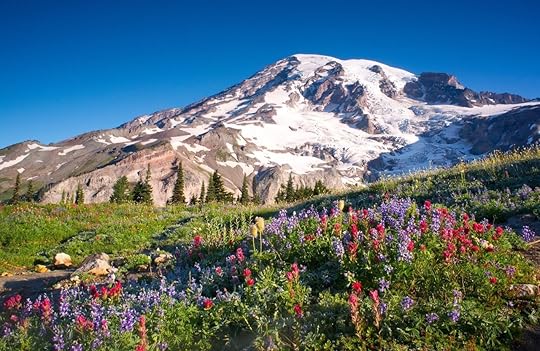
Photo: Christoper Boswell/Shutterstock
The Tour du Mont Blanc in the Alps is the world’s most famous trek for a reason — glaciated peaks, fields of wildflowers, and a thin line of trail circumnavigating big views. Closer to home, the Wonderland Trail is 93 miles of 360-degree views of Mount Rainier, Washington state’s most iconic snow-capped volcano. The trail, which runs through Mount Rainier National Park, winds its way through climates as diverse as lowland forest to subalpine meadows. This ecological diversity translates to days of hiking through lush forests and fields of wildflowers, all in the shadow of 14,400-foot Mount Rainier. Be prepared to get a permit early though, as this trail is a popular choice for all the right reasons.
4. Florida Trail — Big Cypress National Preserve, Florida
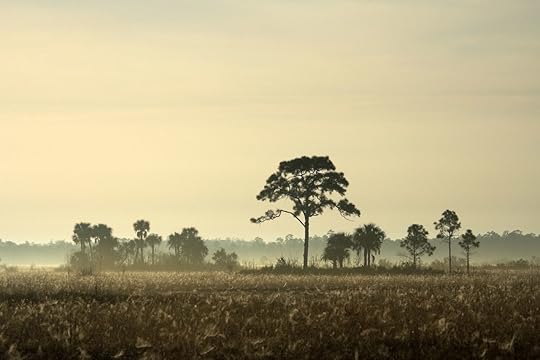
Photo: William Silver/Shutterstock
The tropical blooms and botanical bliss of Big Cypress National Preserve may be reminiscent of African prairies, but the sometimes submerged hiking trails are actually closer to Florida’s Disney World than to the African continent. The Florida Trail runs 1,300 miles through the state of Florida, but the 38.3-mile section through Big Cypress National Preserve is a section of hiking trail unlike any other in the United States or the world. Wade among the bonsai-like cypress trees and keep an eye out for the endangered Florida panther among the trees.
5. Hut-to-hut hiking — White Mountains, New Hampshire

Photo: Raun Kercher/Shutterstock
New Zealand’s Te Araroa may be the world’s most famous hut-to-hut hike. You don’t have to cross the Pacific, though, to experience beautiful views and rocky trails, all with a cozy bed and warm meals prepared for you at night. You can experience windswept summits and views for days on New Hampshire’s Presidential Traverse. This legendary hike is nearly 23 miles long with 9,000 feet of elevation gain. Just because the hike is deep in the backcountry doesn’t mean the accommodations have to be remote. The Appalachian Mountain Club maintains eight huts along the way, providing cozy beds, warm meals, and some stellar views. 

More like this: 8 stunning trails you need to hike in Hawaii
The post 5 extraordinary hiking trails you won’t believe are in the United States appeared first on Matador Network.

Strange sleep habits around world

There’s a tendency to think the concept of sleep is fairly uniform across all cultures. In general, taking naps is seen as a corrective measure; a sign that you didn’t get a proper night’s sleep, and should probably adjust your sleep schedule. In some cultures, however, taking naps is a perfectly normal part of the daily routine. In Botswana, for example, people only sleep when they genuinely feel tired — regardless of the time of day. Brother UK conducted a study centered around the sleep customs of eight countries around the world, and how their sleep patterns affect mood and work performance.
According to the study, here’s how sleep works across eight very different cultures.
China — “Bring your bedroom to work”
“In factories and offices across China, the lines between bedroom and workspace are becoming increasingly blurred. Due to longer working hours, many employers now advocate a short nap after lunchtime to increase concentration. Certain offices have even installed temporary or permanent sleeping and washing facilities in their office spaces to encourage employees to stay round the clock.”
Japan– “Inemuri”
“Taking a nap at work could well be perceived as a sign of laziness or a poor attitude, but not in Japan. The hectic lifestyle of Japan’s city dwellers has led to the wide-scale uptake of ‘inemuri,’ or ‘sleeping whilst present.’ Thanks to inemuri, Japanese workers can nap on public transport, at their desk, or even during meetings — and it’s commonly seen as a sign of hard work!”
Spain — “Siesta”
“Originating in Spain and parts of Latin America, the siesta is perhaps one of the most well-known daytime snoozing traditions across the globe. This practice might be under threat, however, with new business laws introduced in 2016 limiting how late employees can work, and effectively reducing the time they have to squeeze in an afternoon nap.”
Italy — “Riposo”
“Where the Spanish have a siesta, the Italians have ‘riposo.’ Commonly taking place after lunch, riposo can last anywhere from 2-4 hours. Frustratingly for tourists, this means that many attractions are closed throughout the day. Unfortunately, the nonstop pace of modern industry means that fewer and fewer office workers are able to benefit from a midday snooze.”
Norway — “Napping outside”
“Take a stroll through Oslo, Helsinki or another Nordic town, and you might well see some infants taking a nap in temperatures as low as -5 degrees Celsius. Don’t worry – they haven’t been abandoned; sleeping outdoors in the daytime is actually believed to be very good for their health. Could local office workers take some inspiration to increase their productivity?”
Indonesia — “Fear of sleep”
“Stresses of work getting you down? The ominously named ‘fear sleep’ might be the solution. Locally referred to as ‘todoet poeles’ — the practice of fear sleep enables people to nod off instantly to avoid feelings of excessive anxiety and stress. Nodding off when your boss walks in might not be the best solution, but regular naps could well help avoid work-related worry.”
Botswana — “Sleeping on your own schedule”
“You should sleep when it’s dark, correct? Not quite. At least, not in Botswana. The country’s native Kung hunter-gatherer tribe are well known for sleeping only when tired, regardless of the time of day. With an increased uptake of flexi-time, rise in self-chosen hours, and growth of contract-based work, could businesses be embracing the way of the Kung sooner than we think?”
USA — “Silicon Valley sleepers”
“Though it’s not a national custom just yet, sleeping on the job is widely being embraced by some of the USA’s biggest employers. Technology and software companies are leading the napping revolution, with firms like Google going so far as to have purpose-built sleeping pods installed in their offices to help employees rest and refresh.” 

More like this: This is how much sleep you lose while traveling
The post Sleep habits from around the world that will make you rethink your daily nap appeared first on Matador Network.

Miami’s best guava desserts
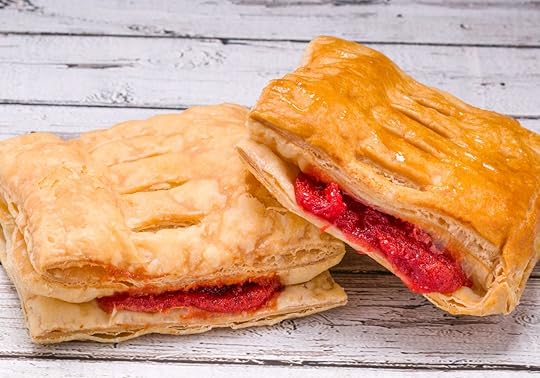
Pitbull may be known as Mr. Worldwide, but his home city, Miami, is a world unto itself. The Miami-Dade population is more than 40 percent foreign born — around 2.5 million people — with immigrants from Cuba, Venezuela, Nicaragua, Haiti, France, Russia, and more. Each of those populations brings a different vibe to Miami’s neighborhoods and food scene. But there’s one addictive flavor that unites all Miamians new and settled: guava.
The sticky-sweet fruit was brought to South Florida from Cuba more than 160 years ago. In the 1800s, guava was a cash crop for settlers in the region, particularly around Coral Gables. Once the seed was planted, it never looked back.
Today, the fruit is in an incredible range of treats appealing to Miami’s global citizens, from the classic pastelitos de guayaba sold in Little Havana bakeries to high-class desserts from world-renowned chefs like Antonio Bachour. There are lots of things you should eat and drink in Miami, but no trip is complete without a heavy dose of guava. These are the seven best guava-infused desserts in Miami’s most popular neighborhoods for the next time you’re in the Magic City.
1. Abuela Maria ice cream — Azucar Ice Cream Company, Little Havana

Photo: Azucar Ice Cream Company/Facebook
In the heart of Little Havana, a two-story ice cream cone juts out from the street’s colorful storefronts. It belongs to Azucar Ice Cream Company, which, as the exterior suggests, serves artisanal scoops of ice cream. It’s not your run-of-the-mill chocolate and vanilla, either. Take the Abuela Maria, for example, which is a blend of crumbled Maria cookies, guava chunks, and tangy cream cheese. Cool off with a cone after watching an intense game at Domino Park, or eat one for a sugar rush to fuel a night of salsa dancing at Ball and Chain just down the street.
2. Pastelito de guayaba — Versailles, Calle Ocho
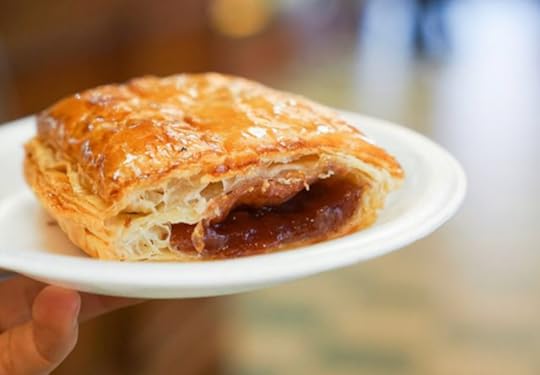
Photo: Versailles/Facebook
You can find a decent pastelito de guayaba (guava pastry) on just about every corner in Miami, but the king of them all is found at Versailles‘ ventanita (coffee window). Opened in 1971 on the famed Called Ocho, the full-scale Cuban restaurant serves pastelitos de guayaba baked fresh daily with a tangy sweet guava filling that’s squished between layers of flaky phyllo dough. Pair the pastry with a thimble-sized cup of colada, an electrifying shot of black Cuban coffee meant to share with friends.
3. El Pastelito macaron — dBakers, Midtown

Photo: dbakers Sweet Studio/Facebook
Take a break from shopping at the Design District or The Shops at Midtown with a sweet treat from dbakers, which sits on the edge of both neighborhoods. Twin brothers Christian and Giancarlo Guevara, the bakery’s owners, put a French twist on guava dessert with the El Pastelito macaron. The macaron is made with gluten-free guava cheesecake filling squeezed between two plump macaron halves. Thanks to the treat’s popularity, the Willy Wonka-like shop launched a “Macaron Lab” teaching visitors the art of creating the delicate dessert with customizable flavors and fillings.
4. Exotic Dome — La Centrale, Brickell

Photo: Sylvain Marrari Pastry Chef/Facebook
La Centrale’s 14 different dining concepts inside of Brickell City Centre bring an array of drool-worthy Italian delights that Miami’s culinary scene was previously lacking. Visitors can choose from a laid-back lunch at Pizza e Pasta or indulge in an upscale seafood dinner at Pesce, but an absolute must is ending your meal with the Exotic Dome. The dessert by pastry chef Sylvain Marrari features a velvety pineapple, guava, and mango crémeux cradled in a hard white chocolate shell and garnished with edible pansy blossoms. The sweet’s presentation fits right in with the shopping center’s opulent boutiques.
5. Pastelito pancakes — B Bistro + Bakery, Brickell
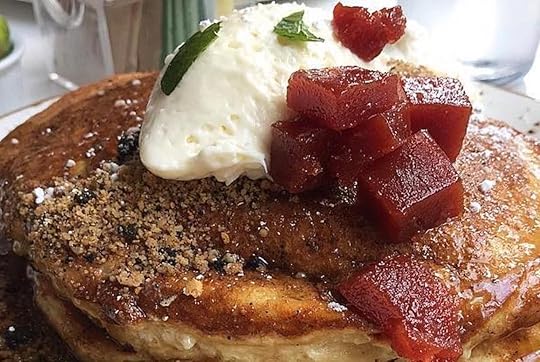
Photo: B Bistro + Bakery/Facebook
While acclaimed pastry chef Antonio Bachour may have left B Bistro + Bakery behind, the restaurant’s addictive guava foods remain. Located in Brickell’s bustling business district, the bistro’s never takes itself too seriously, offering a menu that is both upscale and approachable. Opt for the pastelito pancakes, which is a fat stack of golden pancakes topped with cream cheese mousse, guava preserve, and a delicate brown butter maple syrup that creates the perfect balance between sweet and nutty.
6. Guava and pistachio cheesecake — La Social, MiMo District
View this post on InstagramA post shared by LASOCIAL MIAMI (@lasocialmiami) on Nov 2, 2018 at 6:49am PDT
La Social’s millennial pink exterior should give you a hint that you’re in for a sweet surprise before you even walk in the door. The eatery is split into two sections: a bistro-style dining area and a bakery offering coffee and freshly baked treats. The latter’s aromas waft through the MiMo District every morning. Try the guava and pistachio cheesecake featuring layers of vanilla batter and homemade guava marmalade, interspersed with a creamy pistachio butter cheesecake filling and topped with a fluffy cream cheese buttercream frosting.
7. Guava and cheese doughnut — The Salty Donut, Wynwood

Photo: The Salty Donut- Artisanal Donut Shoppe & Coffee Bar/Facebook
If you’ve looked at any Miami foodie photos on Instagram recently, chances are high that you’ve stumbled across some shots of The Salty Donut’s offerings. Opened in 2015 as a family run food truck, the bakery opened a permanent location in Wynwood to satisfy its rapidly growing fanbase. One of its original offerings is the guava and cheese gourmet doughnut; a plump, picture-perfect bite of 24-hour brioche, swirled guava, and a cream cheese glaze that has made the shop notorious for hour-long lines. Fill up on a cold brew coffee and doughnut to start the day before wandering through the neighborhood’s larger-than-life street murals.


More like this: Where to eat in Miami
The post You’re doing Miami wrong if you don’t try these 7 guava desserts appeared first on Matador Network.

How to find a job in Germany

If you dream to be where the action is when Oktoberfest rolls along, to be able to visit the weiner dog museum on the daily, or see amazing historical sites whenever you fancy it, you need to make Germany your home. For that, you need to get a visa and a job, and here’s how to do it.
What visas are you eligible for?
Necessary appointments and paperwork
Applying for jobs
Finding an apartment
Celebrate!
1. What visas are you eligible for?
If you’re from the EU, an EEA country, or Switzerland, you don’t need additional paperwork to live, work, or study in Germany, just register at your local Bürgeramt (citizen’s office) when you settle into a proper flat.
Working holiday visa
If you’re 18 to 30 years old and from Australia, Israel, Japan, Canada, New Zealand, or South Korea, you can qualify for a one-year working holiday visa. This permit allows you to work and live in Germany for one year. The issuance fee is $64 and a personal interview is required at the Auslanderbehörde (foreigner’s office). For more information on how to apply for a working holiday visa in Germany, check out the official resources.
The job seeker visa
Qualified applicants can prolong their 90-day visitor Schengen visas with a six-month permit to reside in Germany while looking for work. To qualify, applicants must have a bachelor’s degree that is recognized in Germany, significant work experience (five years or more), enough cash on hand to show the government you can cover your expenses, health insurance, and registration in the city you moved to (see Anmeldung below). The issuance fee is $64 and an interview at the Auslanderbehörde is required.
For more info on how to apply for a job seeker visa in Germany, check out the official resources.
The job seeker visa is usually a prelude to the general employment visa, so keep reading.
Residence through a work visa
If you’re an American, or if you’re from Australia, Israel, Japan, Canada, New Zealand, or South Korea, you can apply for residence from within Germany. There are several paths to a residence permit, but the most popular is getting a job (you need the work contract as proof) and filling out the application for a work visa.
A visa for the purpose of employment will be valid through the length of your job contract, so make sure your employer knows you cannot start working until the paperwork is taken care of. For this visa, you’ll need to assemble all of your paperwork in Germany and head to the Ausländerbehörde for a quick interview — bring an interpreter unless you’re fluent in German.
The appointment itself usually takes less than 30 minutes and at the end, if successful, you’ll be given a payment card to cover the issuance fee. A work visa will cost between $64 and $114, and you’ll have to pay for each future extension. Note that your employer can handle your visa application through the Business Immigration Services (BIS), saving you a trip to the Ausländerbehörde.
For more info on how to apply for a work permit in Germany, check out the official resources.
Residence through a self-employment visa
Freelancers are welcome to apply for a freelance visa for self-employment purposes. The application for a freelance visa is more involved than the regular employment visa. Applicants will need to prove they have work contacts in Germany and are capable of finding paid contracts. Profit and loss statements, expense reports, and a printed portfolio are required, too. An interview at the Ausländerbehörde is required for this visa.
For more info on how to apply for a freelance/self-employment visa in Germany, check out the official resources.
2. Necessary appointments and paperwork
The different types of visas all have different requirements, but they share a few common qualifiers.
How to get an appointment at the Ausländerbehörde?
For every visa mentioned, you need to go through an interview at the Ausländerbehörde. Securing an appointment at the Ausländerbehörde can be tricky, but with some persistent checking, you should be able to find an opening through the official website. Alternatively, you can go to the Ausländerbehörde before the office opens to secure one of up to 50 open appointment slots for the day.
Anmeldung
Everyone needs an Anmeldung, which is a registration used to link you to your official German address. You’ll need this registration for many things, such as opening a German bank account, getting your tax ID, receiving mail, and setting up utilities in your new flat. To get registered, you’ll need a form from your landlord, an application form, and your official ID. The registration is granted at the Bürgeramt and is completely free.
Health insurance
Health insurance is compulsory in Germany. You’ll need to have health insurance in place to be granted a visa. Most people in Germany opt for public health insurance, like TK, but private insurance plans, like Allianz, are available for people earning more than $65,380 per year. Employers will offer health insurance benefits for employees that work more than 20 hours per week. Freelancers must secure their own health insurance.
Identification
This one goes without saying, but all applicants need a valid passport with two free pages to print the visa.
3. Applying for jobs
There are different job boards depending upon your field. Many jobs can be found on:
Monster
Indeed
Note that even if you score a job contract, you will not be allowed to start working until you receive the corresponding work visa.
Facebook groups are a great way to plug into the expat community in Germany, and many have job postings for English speakers. If you’re thinking about Berlin, check out Berlin Startup Jobs to get familiar with the startup scene. Don’t underestimate the importance of networking and face-to-face meetings in your field. Attend lectures, talks, or meetups with like-minded professionals to gauge industry trends and hiring behaviors. Buying a day pass to a popular co-working space is also a great way to meet people and make contacts.
German-style curriculum vitae
In Germany, it’s common practice to have a photo on your resume along with your nationality and age. It’s important to list your languages, skills, and hobbies in a German resume so employers can have a better picture of who you are as an individual.
4. Finding an apartment
The catch-22 of the whole process is that you’ll need to find a place to rent before you start working so you can get the Anmeldung. However, many landlords require a job contract and your last three payslips to qualify for apartment rentals. There are a few ways to get around this, like subletting for a shorter period of time to get registered and then looking for a long-term apartment once you have your residence permit. Finding an apartment can be quite difficult, especially in some of the bigger cities. In Berlin, the popular sites for finding rentals are:
WG-Gesucht
Immobilien Scout 24
eBay Kleinanzeigen
Check out some Facebook groups about housing to get an idea of what’s available in your area. In Berlin, check out:
Berlin Apartments
Flats in Berlin
5. Herzliche Glückwünsche! (Celebrate!)
It is a lengthy and stressful process to secure a visa in Germany. If you’re feeling lost in the weeds of bureaucracy, reach out to one of the expat coaches in your city. For Berlin, check out the following:
Red Tape Translation
Expath
Expats in Wonderland
Once you get your shiny new visa printed and put in your passport, it’s time to grab a bretzel and bier to celebrate your new life. 

More like this: What are the biggest culture shocks people face when coming to Germany?
The post How to get a job and move to Germany appeared first on Matador Network.

The best ski resort restaurants
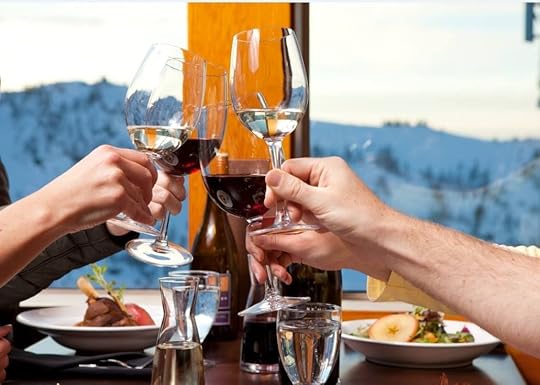
Ski lodge cafeteria food has a reputation for being as bland as it is overpriced. You can only pay $20 for chicken fingers and fries so many times before wanting to revolt. Still, many longtime powderhounds never thought they’d see the day when their favorite hill embraced the concept of decent meals. But the times are changing.
North American ski resorts are finally learning from the best European ski resorts and putting some thought and effort into the food. For guests who already paid upward of $150 just to be on the mountain, it’s nice to finally have some good options. These resort restaurants are serving up delicious — and creative — meals, so go ahead and leave that PB&J at home the next time you hit the slopes.
1. Snowlicious — Panorama Mountain Resort in British Columbia
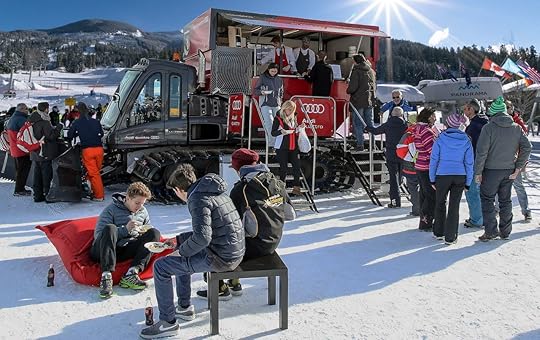
Photo: Panorama Resort
Burritos, craft booze, and a food truck. The Snowlicious Mobile Kitchen parked in British Columbia’s Panorama Mountain Resort combined three trendy favorites to create a dining experience sure to please any shredder in your crew. There’s even sparkling wine if you feel like toasting to how awesome your on-mountain lunch is. Snowlicious makes its way around the resort throughout the day, so you may have to search a bit if you aren’t lucky enough to finish a run with the mobile kitchen waiting for you at the bottom. While it’s not the first mobile on-mountain kitchen in the world (Mammoth Mountain in California did it in 2010), you won’t find Champagne and burritos paired together on any other slopes.
2. The Yurt — Solitude Resort in Utah
There are two options at Utah’s Solitude Resort: You can munch on the usual suspects at the base lodge, or hold off and work up an even bigger appetite by snowshoeing about a half mile further to get to The Yurt. Here, the resort’s chefs prepare a four-course meal with optional wine and beer. It’ll cost you $140 per person, and reservations are required since there’s only room for 24. The price tag includes a snowshoe guide, dinner, and corkage fee. Stuff a bottle of wine in your pack before heading out rather than buying your drinks at The Yurt.
3. Rocker — Squaw Valley in California
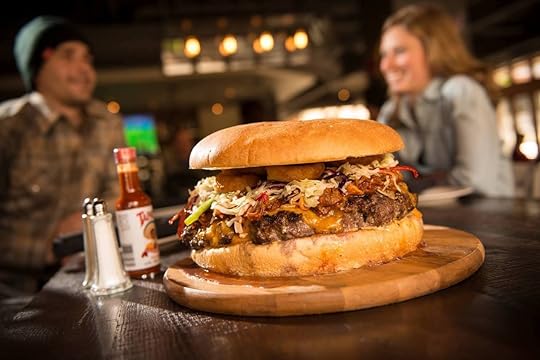
Photo: Squaw Valley Alpine Meadows/Facebook
No word better describes Squaw Valley than “gnar.” Located on the west side of Lake Tahoe, the resort’s terrain is among the most challenging in the country. Which makes a challenging burger feel just right. At Rocker, a restaurant in the base village, there’s a G.N.A.R. burger made with five pounds of beef, pulled chicken, and pork that’s topped with coleslaw and onion rings. It’s named after local legend Shane McConkey and his eponymous film of the same name. It runs for $53, but in the grand tradition of ultimate food challenges, the burger is on the house if you work all the way through it.
4. Steeps Grill and Wine Bar — Whistler Blackcomb in British Columbia
Whistler Blackcomb has many things going for it that no other ski resort does. Riding the Peak 2 Peak Gondola between two mountains, for instance, is an experience on par with flying in an airplane for the first time. Another thing is the food. The resort has the Winemaker’s Apres Series at Steeps Grill and Wine Bar, which pairs local wines from British Columbia’s own Okanagan Valley with a multi-course dinner. Once a month during ski season, Steeps serves a locally sourced menu paired with the wines of See Ya Later Ranch, Nk’Mip Cellars (Canada’s first indigenous-owned winery), and others. The restaurant also partnered with Vancouver chef David Hawksworth to offer the Hawksworth & Steeps pop-up lunch series, a monthly three-course interruption to otherwise normal ski days.
5. Ragnar’s — Steamboat in Colorado
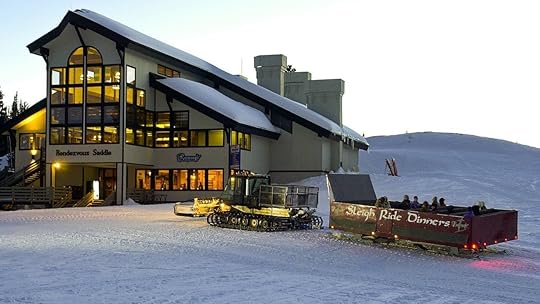
Photo: Steamboat Resort
Ragnar’s at Steamboat is a restaurant that pays homage to the town’s ski-crazed history, which began with the arrival of Norwegian Carl Howelsen more than 100 years ago. Howelson popularized not only skiing, but also ski jumping. Today, Steamboat is a primary Olympic training ground. Chow down on seafood chowder and köttbullar before watching the madness of two-plankers flying hundreds of feet through the air at Howelson Hill. If you’re feeling classy, go for Ragnar’s five-course sleigh ride dinner on a Friday or Saturday night.
6. The Roundhouse — Sun Valley in Idaho
Opened in 1939, Sun Valley’s most popular restaurant, the Roundhouse, was the nation’s first on-mountain dining experience at a ski resort. Today the Roundhouse serves fondue, steak frites, and hot lobster rolls to skiers. If you get there early enough you may find a spot to warm up by the massive stone fireplace. This spot is a draw even for non-skiers looking for a scenic view of the surrounding mountains and the town of Ketchum down below.
7. The 10th — Vail in Colorado
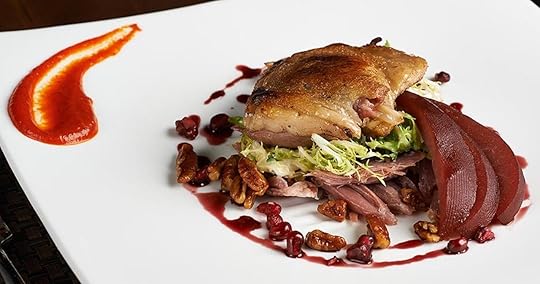
Photo: The 10th Vail
Those pesky ski boots always get in the way of basic activities like walking. It’s a non-issue at Vail’s on-mountain lunch restaurant The 10th, named in honor of the legendary 10th Mountain Division infantry, because the restaurant gives you a pair of slippers to wear. While so much attention is given to the furry foot warmers, the food is equally impressive. It’s difficult to choose between elk chili, bay scallops, and Wagyu tenderloin. Make a reservation to guarantee yourself a table and a pair of slippers in your size. 

More like this: Why you need to visit Idaho this winter
The post 7 ski lodges with food that doesn’t suck appeared first on Matador Network.

Matador Network's Blog
- Matador Network's profile
- 6 followers



